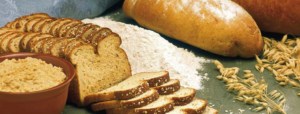
Just about everyone who has diabetes has heard about the dangers associated with carbohydrates – and for a good reason. When you don’t closely monitor your carb intake, it can seriously affect your blood glucose level. In turn, that could eventually make you more likely to experience severe complications of diabetes down the line.
But not all carbs have the same effects on your body. When consumed in reasonable portions, some carbohydrates play a vital role in maintaining your health. Fiber is a crucial carb for people with diabetes since it can actively make it easier to manage this condition. For much more information on fiber and diabetes, read on.
The Basics of Fiber
It’s easy to assume that all carbohydrates are basically the same thing. Still, there’s more to know about this nutrient category than this implies. First, it’s necessary to understand that there are three basic types of carbs – sugar, starches, and fiber. Unlike sugars and most starches, the body doesn’t digest dietary fiber. Still, this carb comes with many benefits, including improvements to your digestive health.
Because of this, it might be surprising to learn that most people don’t get enough fiber each day. In fact, most adults in the United States only get half their daily recommended fiber intake. Do you suspect you might fall into this category? In that case, it’s time to talk to your healthcare team about adding more fiber to your diabetes diet.

Know These Types of Fiber
There are two basic subgroups of fiber, both of which come with unique benefits. Soluble fiber can dissolve in water, creating a gel-like material in the process. This type of fiber is most closely associated with reduced blood glucose and cholesterol. You can find soluble fiber in legumes, certain fruits (including apples and citrus fruits), carrots, barley, oats, and psyllium.
On the other hand, insoluble fiber does not dissolve in liquid. You need this form of fiber to help waste travel smoothly through your digestive system. Many foods include insoluble fiber, such as beans, nuts, some vegetables, wheat bran, and whole-wheat flour.
Fighting Diabetes with Fiber
Though fiber is a crucial part of anyone’s diet, people with diabetes should put extra emphasis on eating enough fiber daily. That’s because fiber can assist in handling diabetes in several ways. Fiber can help you:
- Control your blood sugar. While other carbohydrates can cause blood sugar to spike, that’s not the case for fiber – after all, your body doesn’t absorb it. Fiber can slow the rate at which you absorb other carbohydrates, making it easier to stay in range.
- Feel full throughout the day. Weight management plays an essential role in handling diabetes. Since fiber goes through the stomach slowly, it can help you stay full for longer, making it easier to avoid overeating.
- Keep your heart healthy. Some of the worst complications of diabetes are related to heart disease. Fiber can cut down on the amount of cholesterol and fats you absorb, which can lower your cholesterol and triglyceride levels.
Adding More Fiber to Your Diabetes Diet
Chances are, you’ve heard the phrase “an apple a day keeps the doctor away.” But to get the fiber you need, you’d have to add five more apples to your everyday diet. Six apples contain about 30 grams of fiber, and the Dietary Guidelines for Americans, 2020-2025 encourage adults to get 22 to 34 grams of fiber daily.
Obviously, you don’t need to eat half a dozen apples each day to reach your fiber requirements. Instead, keep these tips in mind:

Focus on Whole Grains
When shopping for bread, rice, pasta, and other grains, look for products that list whole grains as the first or second ingredient. Two slices of whole-wheat bread and a cup of cooked brown rice both contain four grams of fiber. (A word of warning: if an item is advertised as “multigrain” or “100-percent wheat,” it probably isn’t whole-grain.)
Get The Day Started Right
Not all cereals are good sources of whole grains, and even some whole-grain cereals are full of unneeded sugars. Instead, try cereals like Fiber One (which has 14 grams of fiber per half-cup) and Raisin Bran (which has 7.5 grams of fiber per cup). Otherwise, consider eating oatmeal with berries and nuts or avocado toast with chickpeas.
Load Up on Legumes
Beans aren’t just a fantastic source of fiber – they also come with a ton of nutritious plant-based protein. Add a quarter-cup of kidney beans to a green salad for three grams of fiber, or eat a cup of canned minestrone soup for five grams of this nutrient. Other legumes, like peas and lentils, are also great for adding fiber to your diet.
Eat Fruits and Vegetables

A good diabetes diet should include lots of produce, and the fiber found in many fruits and veggies is a big reason for that. You’ll get five grams of fiber in a cup of cooked carrots and four grams in a cup of strawberries.
Consider Chia Seeds
Chia seeds and flaxseed make it easy to add fiber to almost anything. A tablespoon of flaxseed contains three grams of fiber, while an identically-sized serving of chia seeds comes with five grams. Just mix them into smoothies, soups, cereals, and other dishes for a quick dose of fiber!
Take It Slow
If your current diet doesn’t include much fiber, getting more of this nutrient is wise. However, you should make a point of introducing fiber gradually and drinking lots of water while you do! You could run into digestive issues like gas, bloating, diarrhea, and constipation if you don’t.
Enhance Your Diabetes Management With Fiber – And ADS
With our advice, you’ll be ready to add fiber to your diabetes diet the smart way and reap the health benefits associated with this nutrient. While you’re making improvements to your diabetes management strategy, why not take a moment to think about how you’re getting diabetes supplies? If you could use a reliable supplier of insulin, glucose meters, and any other diabetes-related products, you can’t go wrong ordering from ADS.
